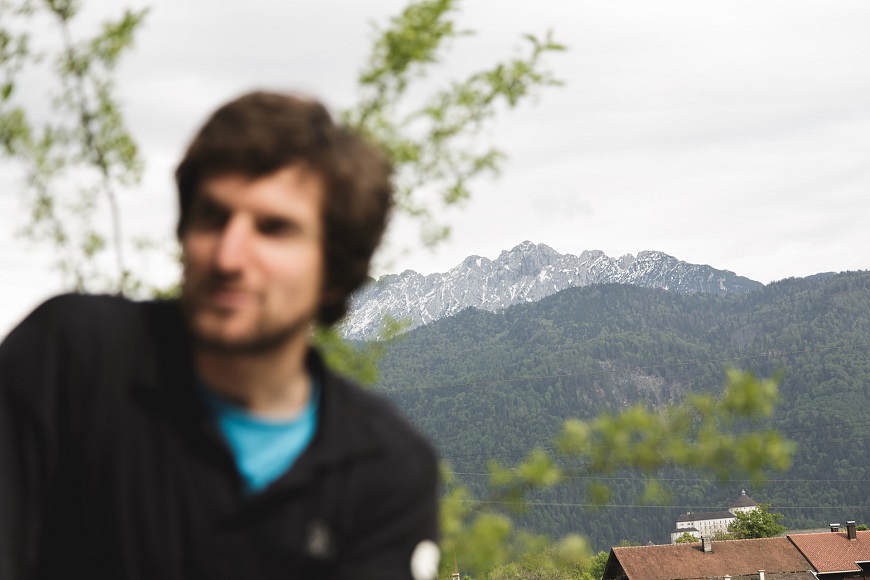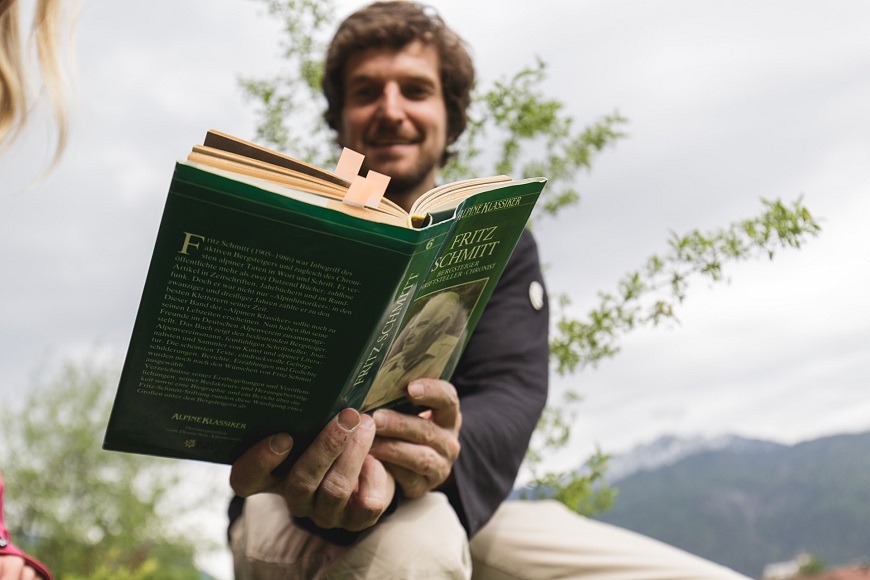Towards the sun

Active & nature
by Vanessa Klaus
Towards the sun
We meet Gebhard Bendler, who was born in Wörgl, at the foot of his home territory. With more than 20 years of climbing experience he pretty much grew up "on the rock". "I climbed on the Koasa for the first time when I was twelve", and by "Koasa" he means the Wilder Kaiser, which is what it's called amongst the locals. His father wasn't exactly enthusiastic about his ambitions, but the passion for the mountains had grabbed him and still hasn't let him go. Even a bad climbing accident at the age of 17 couldn't stop him from wanting to climb. The young Gebhard fell ten meters, and suffered a double vertebral fracture. The doctors thought he would never be able to do sport again. "That was very difficult news to accept", remembers Gebhard with a wistful glance at the mountain. But shortly afterwards it turned out that the injuries were only half as bad as originally thought. Soon after being released from the hospital he was up on the ropes again. These days he thankfully doesn't feel anything from his injuries, but the "Koasa" mountain range has left a lasting impression.

We ask Gebhard how the Wilder Kaiser got its name. He tells us that in 1240 there was a text written about a chamois hunt that mentioned it took place "on the Chaiser". Generally there are various theories about the origin of the name. "The most plausible story is that there was a farmstead there that belonged to the Kaiser, and based on this the whole area surrounding it was known as Kaiser", says Gebhard. The grandiose appearance of the mountain range is obvious. With its striking peaks and the silvery colour of the Wetterstein limestone, the mountain almost looks like a Kaiser's crown. And when the mountain is covered in soft white snow in winter, the Kaiser even gets a fitting ermine cloak.

Another story says that the final resting place of Kaiser Karl is high up in mountains, and he's been watching over the mountains and its conquerors ever since. Gebhard continues: "Look at it, with its rugged rocks, surrounded by the rolling hills. Doesn't it look impressive? But the "wild" in the name is less related to the appearance than the fact that the landscape was uncultivated and unused. For farmers the rocks were a wild wasteland", he adds.

In the 19th century tourism development started in the Kaiser Mountains, and since then alpinism and tourism have developed hand in hand. "Because we're close to the Bavarian border, a lot of German climbers came to Tyrol. First of all the famous climbing pioneer Hans Dülfer", Gebhard explained the origins of climbing on the Koasa. In 1913 Hans Dülfer did the first ascent of the "Totenkirchl west face", which was the most challenging tour. "He was apparently introverted and reclusive, but on the rock he was unbeatable", explains Gebhard Bendler respectfully. The first ascent of the "Fleischbank east face" is also attributed to Dülfer. "He developed his own abseiling technique, and was a revolutionary in climbing history. He died far too young, in his early twenties, in the First World War at the Second Battle of Artois", says Bendler.

Climbing history was written on the Wilder Kaiser. It wasn't just about brave mountain climbers and their first ascents; the development of climbing equipment also originated here. "The early mountaineers moved around the rock faces without any securing, and were often climbing at their limits", explains Gebhard Bendler. Bit by bit additional equipment was developed, and the first carabiner in the Alps was used on the "Fleischbank east face". "A Munich carpenter came across a carabiner at the fire brigade or at his work, adapted it for climbers and brought it into the mountains", says Gebhard. "As well as this, around 1943 the 1st rock climbing bolt in the eastern Alps was fixed in the Mauk west face. Before then these hooks were scorned by the climbing community, as they were seen as artificial aids", says our climbing pro.

With over 40 peaks and tours of all levels of difficulty, the Kaiser Mountains are a Mecca for climbers. And that at any time of year.
"In spring, when there is still a lot of snow, you do more climbing on the south faces. For example above the Gruttenhütte or the Ackerlhütte. The south-eastern tours on Karlspitze above Gaudeamushütte are also possible early in the year", Gebhard describes an area that he knows like the back of his hand. "On hot summer days the not overly difficult and well-secured "via classica", with its nice climbing passages, is an excellent choice. But it's appropriately busy", warns Gebhard. "The north faces of the Totenkirchl and Kleinen Halt have plenty of tours for hot days, which are just as nice but not as busy. In autumn the Schneekar near Scheffau can be recommended. You can soak up plenty of sun here, before the winter comes", enthuses the climber.

Totenkirchl, Fleischbank and Teufelswurzgarten – the names of these peaks and towns all have legends surrounding them, which give the Kaiser that special something, even today. "They say that the devil (Teufel) tended herbs (Wurz) in his garden (Garten) at Teufelswurzgarten. A besotted young man wanted to pick some herbal remedies for his sick girlfriend, and paid for it with his soul" says Gebhard. "The Fleischbank (meat bench) supposedly got its name for the many dead chamois that a farmer trapped and then collected", he continues. Maybe it’s these mysterious stories, combined with the climbing history, that make the Kaiser Mountains so fascinating. For Gebhard every tour on the Wilder Kaiser is a break from everyday life. He's always finding new places that ensure thrills and a feeling of happiness.
0 Comment (s)
More comments